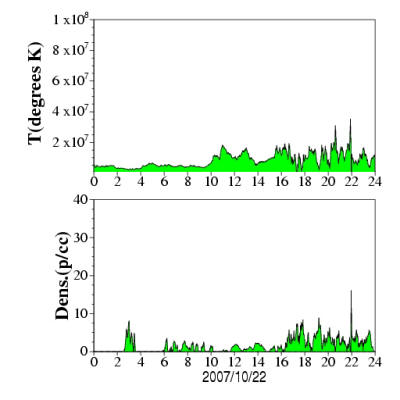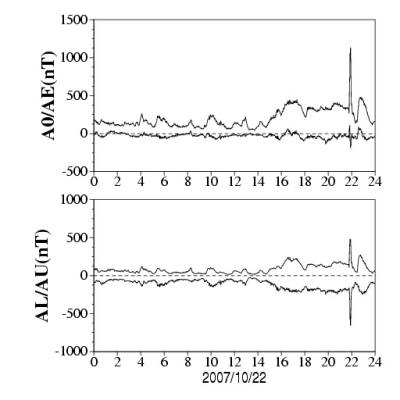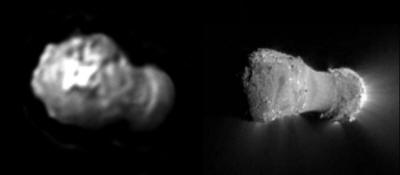|
For thousands of years, the appearance of a comet in the terrestrial skies has provoked deep anxiety and even collective hysteria in humans the world over.
The reasons for this response are not entirely clear. Working with historical testimony, David Talbott and his colleagues have concluded that comet fears originated in a global experience of catastrophe and terror. Behind all of the regional traditions and stories is the memory of the "Great Comet," the mother of all comets.
The memory traces to the origins of
world mythology, according to Talbott, and is particularly vivid in
the story of a cosmic serpent or dragon threatening to destroy the
world. The most common ancient ideas attached to a comet were the
death of kings, the fall of kingdoms, cosmic upheaval, and the end
of the world.
The question is especially appropriate today because of the approach of the Comet Elenin, which is predicted to pass within about 0.233 AU of the Earth in October of this year.
Speculations about Elenin range from a theoretical NASA cover-up of an "extinction level event," to theories that the comet is actually the ever-elusive planet "Nibiru" of author Zecharia Sitchin's lore.
(For a thoughtful meditation on the credibility of some of these theories, see the Subversify.com piece, "Is Google Censoring Nibiru?").
It should be noted here that the leading
proponent of the electric universe, Wal Thornhill, has
refrained from predicting specific behaviors of Elenin due to the
number of unknowns. These unknowns (discussed below) include the
Sun's activity, and the constituent material of the comet itself.
We are still told that comets are "dirty snowballs" that formed billions of years ago in a theoretical "Oort cloud."
The idea makes no sense and has been
repeatedly falsified by the observed behaviors of comets. Silence on
such matters is not helpful. When the institutions of science choose
a path of denial on controversial matters, rightly or wrongly it can
only fuel perceptions of secrecy and suppression.
One need only review the extraordinary spectacle provided by Comet Holmes 17P to see how deep the crisis in cometology reaches.
In October of 2007, Holmes suddenly and unexpectedly brightened by a factor of a million. In less than 24 hours, it grew from a small 17th magnitude comet to a magnitude of 2.5, so large it was easily visible to the naked eye on Earth.
Holmes' coma continued expanding until
by mid-November of 2007 it had become the largest object in the
solar system, vastly larger than the Sun. The coma's diameter had
grown from 28 thousand kilometers to 7 million km.
Among the common sense questions posed by the enigma:
Unfortunately, the science media and the astronomical community had barely anything to say about Comet Holmes. This seems nearly unbelievable, considering the enormous interest the comet generated on the Internet.
As Thunderbolts contributor Scott Wall explained in his 2008 article, " Comet Holmes - a Media Non-event":
One might think that the bizarre and unpredictable behavior of comets would inspire a fundamental reconsideration of comet theory.
But comet science as a whole continues in a state of drift, never asking the questions that could change the picture entirely.
For years, however, the questions have
been asked by proponents of the Electric Universe, who contend that
comets are charged objects moving through the electric field of the
Sun. In recent years only the electric comet model has anticipated
the major surprises in comet science, a fact anyone can confirm for
himself. It is only reasonable, therefore, to ask if an electrical
explanation might help us to understand the explosive behavior of
Comet Holmes.
During its time in the outer reaches of the solar system, the comet will acquire a negative charge with respect to the Sun.
Then, as it approaches the inner limits
of its orbit, accelerating through the electric field of the Sun, it
will begin to discharge to the plasma surrounding it, producing the
familiar bright coma and tail. Comet jets are electric discharges to
the nucleus - the jets electrically machine the comet surface in a
process similar to the industrial process known as spark discharge
machining.
When asked to interpret Holmes' "flare-up," Wal Thornhill suggested in a private email:
And in fact, the sun had been electrically active in the days before Holmes' so-called "explosion".
Investigator Michael Mozina noticed that there was a large spike in the density of the solar wind on October 22 at 19:45, two days prior to the flare-up (see below movie or graph).
This could have switched the comet into
what Thornhill describes as normal glow mode, allowing the plasma
coma to become visible.
In fact, any honest consideration of the electric comet must open the door to a vast reassessment of astronomical theory. The electric comet means an electric Sun - the Sun is powered by electric currents. Then the great enigmas of the Sun - especially the "mysterious" acceleration of the solar wind - would find an answer that so far have remained off the grid of solar physics.
This reassessment wouldn't stop with the
Sun, since the Sun is just one of billions of stars. A
reconsideration of comets would lead to a sweeping revolution in the
space sciences, changing our picture of space altogether.
If it had been, a very simple test could have proven that we live in an electric solar system with an electrified Sun.
A Langmuir probe or simple current metering system attached to a corona discharge point could have registered the discontinuities in the plasma discharge (dark current to glow to arc) between the impact probe and the surrounding plasma as the probe closed on the comet nucleus.
Given what was learned in the mission, we have reason to believe the test would have been favorable to the electric comet. In fact, Wal Thornhill expressly predicted the most "surprising" of these findings in advance of the mission.
In 2001, shortly after the announcement of Deep Impact, Thornhill wrote:
Twenty-four hours before the impact event, in collaboration with the Thunderbolts.info group, Thornhill predicted that an electrical "flash" might precede the impact and explosion, and that the explosion would be far more energetic than NASA anticipated.
And this is precisely what happened on
July 4, 2005, much to the astonishment of NASA and astronomers
around the world.
In Internet discussions on the predictive successes of the electric universe, some anti-EU activists have asserted that the Deep Impact (and many other successful EU) predictions can be dismissed because they have not been quantitative to the mathematicians' satisfaction.
In other words, a successful prediction does not count as evidence if the prediction does not give a numerical value. This meaningless response would not be accepted by any self-respecting scientist. The primary goal in any science must be to first get the concepts established to coherently fit all available observation.
If the concepts are correct, mathematics
become a useful tool in completing the picture at a higher level of
precision. But mathematical precision in and of itself is useless in
the absence of simple and direct explanatory power.
Despite this,
In the electric universe, an essential contribution comes from experimental work in the laboratory, work that is foundational in establishing a frame of reference logically prior to any mathematical experiments.
Due to the scalability of electrical events, patterns that can only be created by electric discharge in the laboratory become extremely significant when these patterns are observed on objects in space. Of this principle, numerous examples can be given. The formation of comets and asteroids is an excellent case in point, due to the unique but repeated forms of these bodies, often exhibiting a double-lobed peanut shape.
Electric universe advocates have long contended that comets and asteroids were excavated from the surface of planets and moons in a prior epoch of planetary instability and electrical discharge activity.
The evidence suggests that these bodies were fused by electric arcs acting on surfaces. The best example of this process is likely the planet Mars, since it is now known that material was removed from the crust (from the surface down) from the Martian northern hemisphere.
Additionally, planetary scientists now suggest that the asteroid-like Martian moon Phobos was formed out of material violently removed from the surface by cosmic events not well-understood.
In the documentary
The Lightning Scarred Planet Mars,
David Talbott presents a strong evidential case that Phobos was
fused by electrical discharge acting on the surface of Mars.
Ransom subjected a bed of hematite to an electric arc, creating a number of fused spheres alongside occasional double-lobed configurations. The latter were remarkably similar to the incongruous shapes of numerous comets and asteroids.
For a side-by-side comparison, note the
shape below on the left and similarity to the comet Hartley, shown
on the right:
Laboratory specimen
compared to Comet Hartley In light of this extraordinary comparison, the anti-EU activists' relentless demands for mathematical quantification grow more absurd.
Institutionalized astronomy, with its massive advantages in the forms of billions of dollars of funding, biased educational and peer-review systems and the uncritical support of science media, has failed to resolve the "mysteries" of comets.
In contrast, a few plasma
experimentalists working with virtual pocket change have delivered
findings that can and should revolutionize comet science.
A failure by NASA to honestly and thoroughly reassess comet theory may have unforeseen, long-term consequences for the agency's credibility and the public trust. Such a reassessment must not ignore the contributions of plasma physicists and electrical engineers, no matter how far-reaching or uncomfortable the ramifications may be for conventional theorists.
In this regard, perhaps the world's leading astronomers would be wise to heed the words of the Professor Randy Pausch who once quipped,
|



